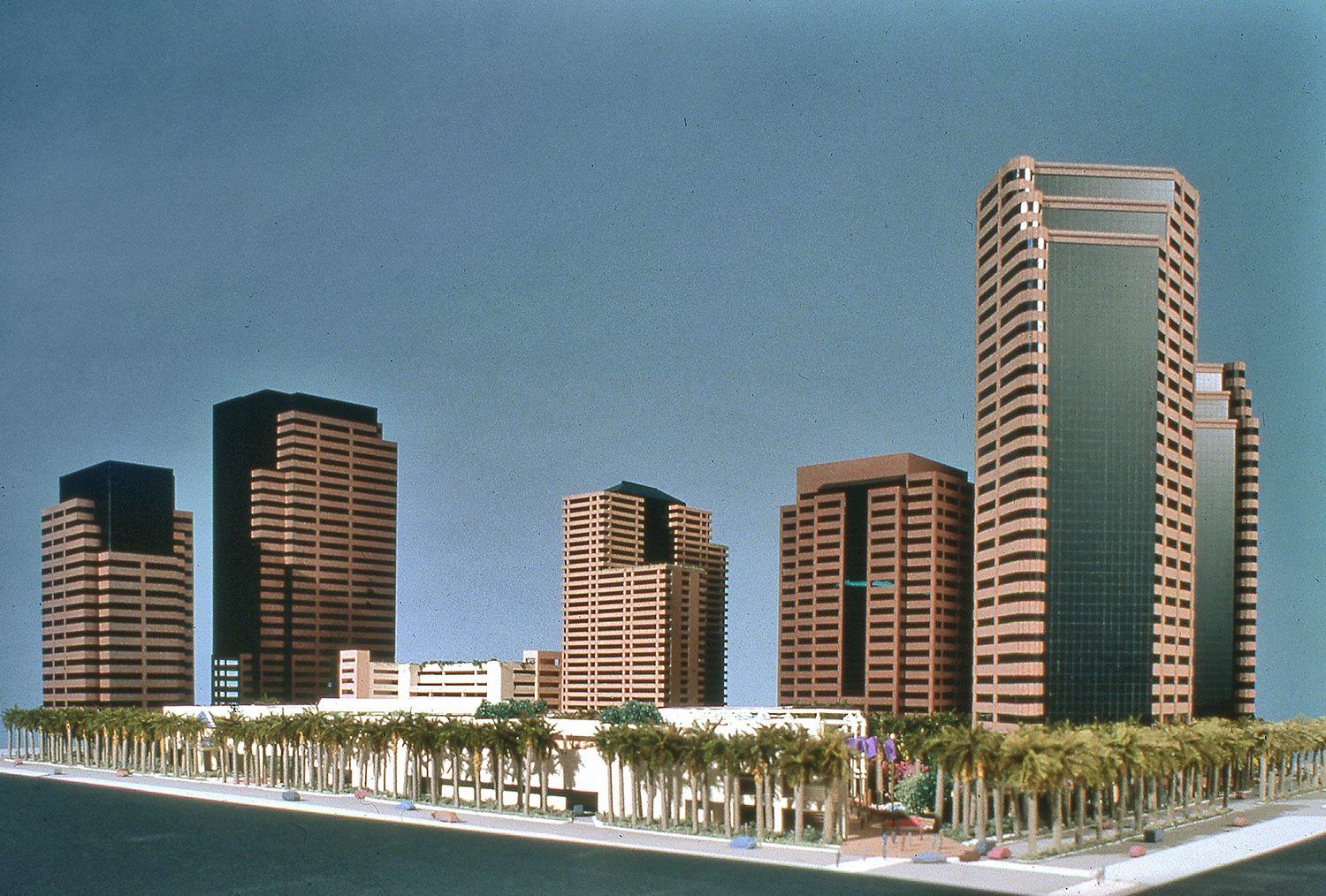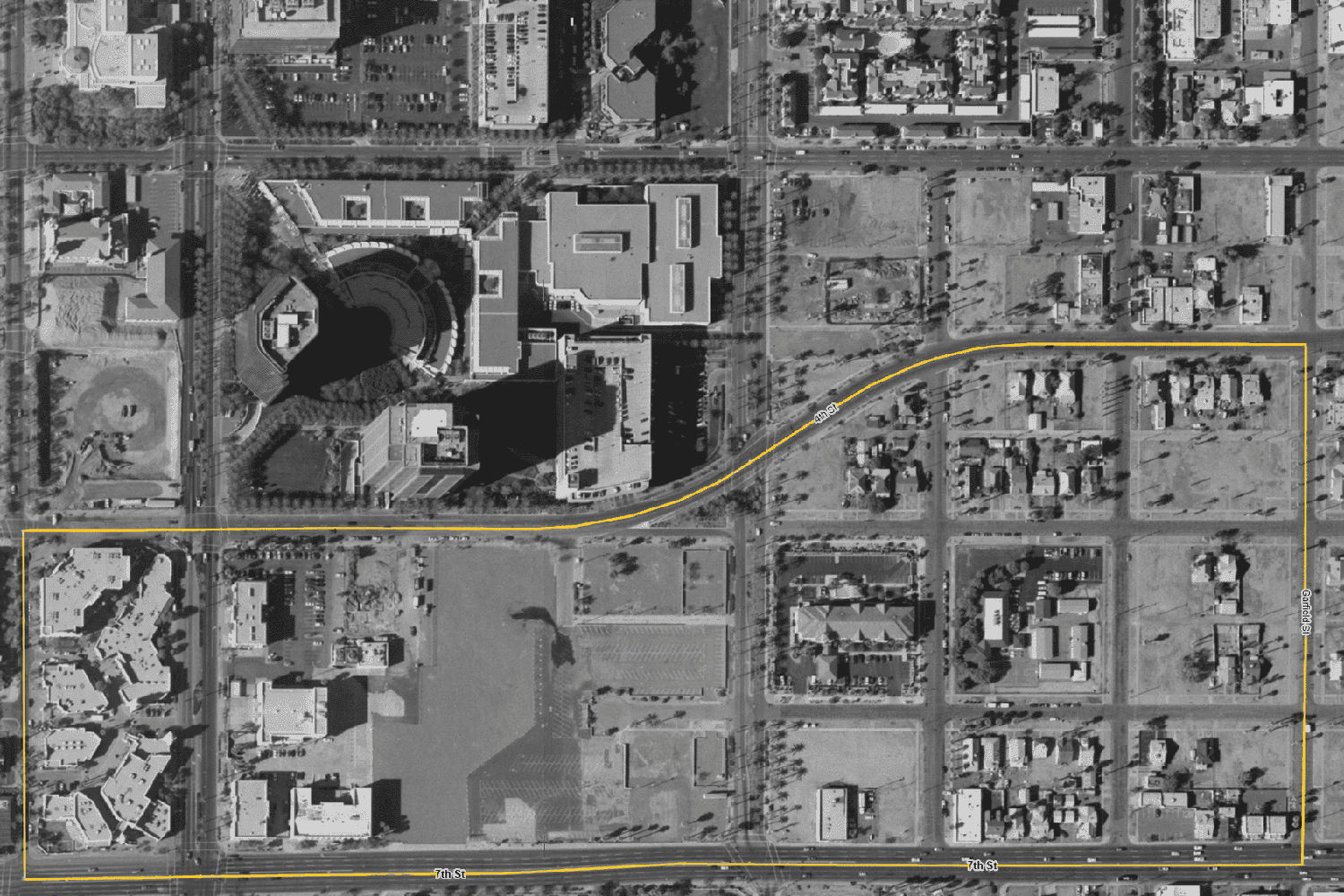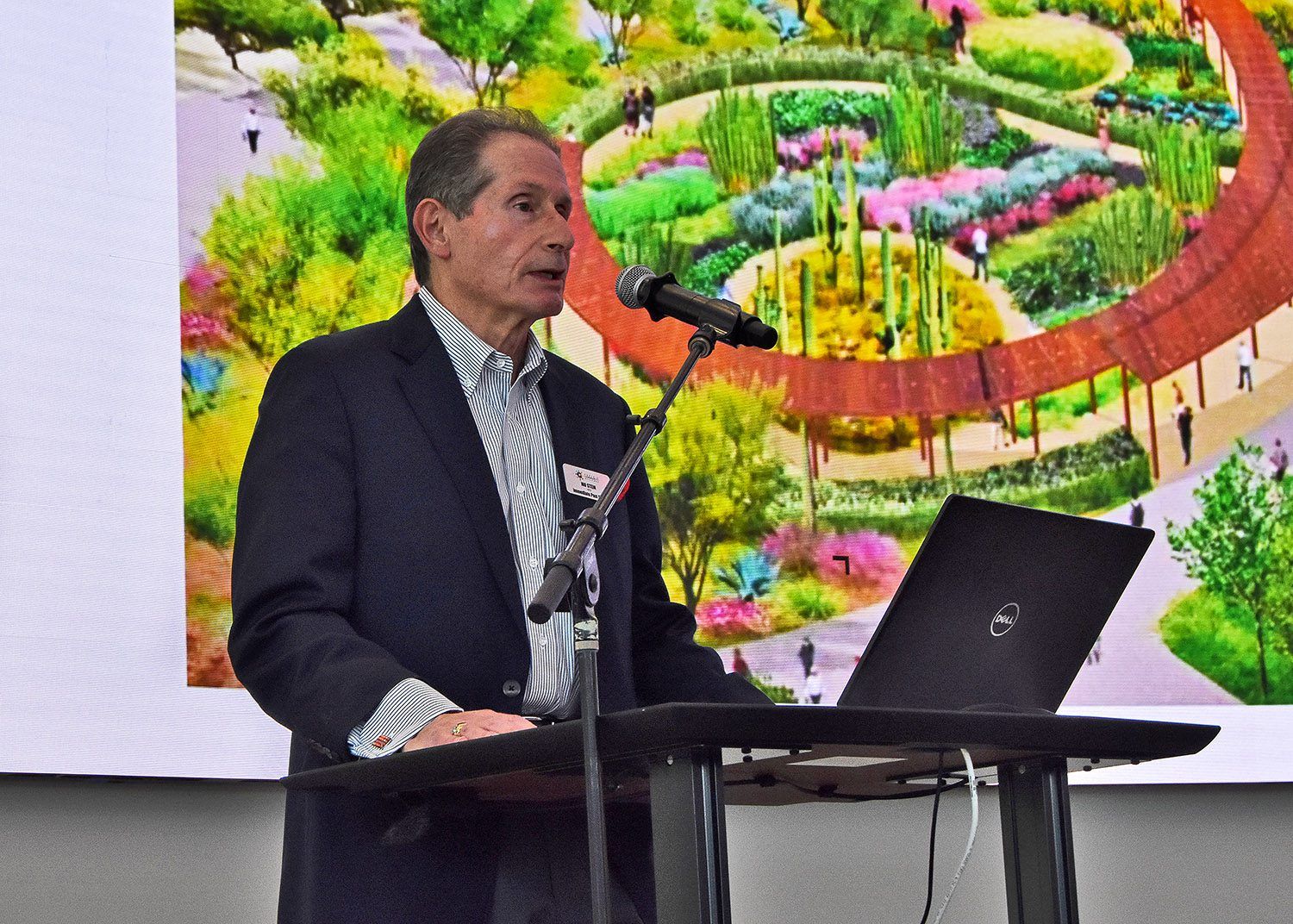Meet Mo Stein: A Phoenix Community Alliance "City-Shaper"
The “City-Shapers” series fills in the gaps of historical knowledge of Phoenix Community Alliance, a nearly four-decade old business advocacy organization, that has influenced the growth of downtown and beyond.
Mo Stein has been with the organization literally since its foundation meeting in 1983, and then became a Member in 1987. He quickly rose through PCA’s ranks to become a local leader investing sweat equity to put the downtown community on a different track.
Since then the Director, Principal and SVP of HKS, a national architecture firm, worked firsthand to materialize many triumphs for his city. Accomplishments include the revitalization of Steele Indian School Park and formation of the Human Services Campus, the land acquisition for Phoenix Bioscience Core, and advocating on behalf of the revitalization of Margaret T. Hance Park.
Q: You’ve lived here all your life, what was downtown like in your upbringing and how did that predetermine your involvement in the community?
Stein: As a kid, we would shop downtown and we would go down to [J.C.] Penney’s and Hanny’s [Menswear].
[Hanny’s Menswear was an iconic clothing store, housed in an International Style building at Adams and 1st Street, opened from 1947 through 1986. Hanny’s Restaurant opened in 2008, furthering the building’s long history with downtown. Learn more about its history here.]
We grew up on Central [Avenue] and Bethany Home [Road]. It was rural at the time. When I say rural, I mean farmland, cattle, corn, chickens and eggs. Central [Avenue] was two lanes and had even more tree canopies. Then once Park Central happened, you didn’t have to go downtown for anything.
It was a natural progression. People started to leave downtown and there was a migration to the suburbs.

Q: How did you enter the orbit of PCA?
Stein: I attended a big meeting downtown. It’s kind of the formulation meeting of PCA. I remember they stood up and asked everybody to write a $1000 check to start bringing people together. With that money, they went out and hired Steve Dragos who was the first director of PCA [who was hired in July 1984].
When we started our business in ‘87, the first thing we did was subscribe to the [Phoenix] Business Journal. And the second thing I did was call up Barry [Starr] and join PCA because I wanted to be a Member.
Q: The organization helped assemble the land that became Arizona Center. Did that project put PCA on the map?
Stein: The grand opening of Arizona Center [Nov. 15, 1990] was probably the biggest night in downtown I attended. You couldn’t get close to this thing. It was wall-to-wall people in Downtown Phoenix that night. The business community and people took notice, and then PCA was at the table.
To learn more about the development of Arizona Center, read PCA’s involvement on the project here.
Q: What was the organization like when you first joined?
Stein: It was very much like, you were on PCA and you were the president of a bank, or the publisher of the newspaper. That’s who was in the organization. Every law firm, every major bank, every accounting firm. There weren’t a lot of small businesses in the organization. In fact, there wasn’t really any dialog about that kind of thing.
[For contrast: In December 2022, PCA had 296 total Members, a mixture of private professional, companies and non-profits, amongst its membership.

Q: Could you go into the development of the Human Services Campus and how it has helped address a problem?
Stein: It wasn’t until the [Maricopa] County came aboard that everything started to happen quickly.
But there was also the issue of bringing all these organizations together geographically. Some people didn’t want to be on the campus. People questioned whether you could actually create a campus. Is this actually going to work? We couldn’t go any place and see it. Nobody had done it.
To learn about this key PCA initiative, read more about the project here.
Q: People experiencing homelessness is a very prevalent issue in the community. What’s the biggest barrier for people struggling to make the transition?
Stein: The real issue is our investment in supportive and permanent housing. I think people deep down believe in shelter. But convincing people that supportive housing can be safe, meaningful and fair, that’s a challenge.
But the first step out of homelessness is permanent, supportive housing, a job, and the ability to have safety and a place to live.
Q: It’s somewhat of an open secret PCA helped with the land acquisition for the site the Phoenix Bioscience Core was built upon. Could you go into more detail the extent of PCA’s involvement?
Stein: It was done kind of stealthily and things were happening really, really fast. It wasn’t years, it wasn’t months, it was days.
We could have put a football stadium on it. But that’s when the decision was made we should turn to bioscience. The tip of the arrow was TGen being sited first. It was absolutely the right decision.
To read Downtown Phoenix’s history on the Phoenix Bioscience Core (PBC), read the story here.

Q: What changed within PCA as you became board chair?
Stein: Marty [Shultz, Immediate Past Board Chair at the time], stepped away. He said, “I’ve taken as far as it can go; you’re going to have to get this done.”
I had to make decisions I thought were good for the organization, like to create and fulfill the original affiliation agreement [with Downtown Phoenix Inc. (DPI)].
We had to respect the traditional PCA organization, but still create change as we became integrated with the DPI model. It was taking something good and knowing you’d have something even better.
[Prior to 2013, the Downtown Phoenix Partnership (DPP) and Phoenix Community Alliance were two separate, but similar organizations. PCA focused primarily on development and advocacy, and DPP concentrating its efforts on enhanced municipal services within the core of downtown. When DPI was created in 2013, the first priority was to bring DPP and PCA together under one umbrella.]
We stabilized the membership and created a new model for costs. We reinvigorated our Committees about halfway through my term to be more proactive and focused. Then the committees took off, which solidified the organization.
Toward the end of my term we said the organization needed to take a broader brush of Committee work and advocacy. Every time we’ve looked at geography, we’ve been successful. We talked about McDowell Road and Hance Park a lot.
We felt that Hance Park was critical to the master plan of downtown and if didn’t we step in and make fundraising a priority for PCA and the community, we’d be missing maybe the only opportunity to get it done.
And the work the Hance Park Fundraising Committee is doing is raising the profile of the organization.

Q: What was your relationship with Past PCA Executive Director Barry Starr like?
In addition to serving as Executive Director in the 1990s, Barry Starr was a prolific leader in the community, who helped shape and raise the public profile of Phoenix. In a career that spanned decades, he begun public life as a police officer in the 1960s, eventually rising to city councilman in the next two decades.
By the early 1990s, he served as deputy Chief of Staff for Mayor Paul Johnson and advised Gov. Rose Mofford. When Starr became the Executive Director of PCA, he grew the organization to its ultimate significance and success.
Stein: I knew Barry for a long time. When he retired as a police officer [in 1961], he became the CEO of Valley Big Brothers [in 1966]. So I got to know him, beginning in the early-70s.
When he came to PCA, he was a natural. He was older than me, but we had a lot of stuff in common. We grew up in town. We all knew Marty [Shultz]. I liked talking to him because he would listen to me. He was very approachable.
The best conversations we had were at Yoshi’s, at 24th St and Indian School [Road], on my way home.
It wasn’t just me, it was other people coming up in this community. If you ask [other PCA board members and local leaders] Heidi Schaefer, Carol Poore or Sandy Ferniza, I guarantee they all have similar stories.
By the end of his tenure as Board Chair at the end of 2017, Mo Stein helped revitalize the then three-decade old organization. He delivered stability to the structure of the organization for a new generation of Members, while reimagining the board and Committees for enhanced advocacy, to the benefit for his immediate successor Diane Haller, as well as longevity beyond her.